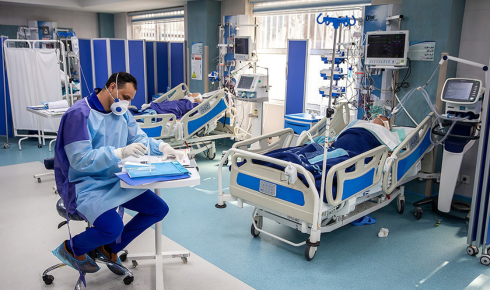Let’s be honest—no one enjoys sitting in a crowded clinic, waiting for hours, just to get a blood test done. You wake up early, skip breakfast because you’re fasting, and then wait in a noisy, fluorescent-lit room with a dozen others doing the same. It’s stressful, time-consuming, and honestly? Pretty outdated for 2025. That’s why Iran, like many parts of the world, is slowly but surely embracing a new kind of healthcare convenience: home-based lab testing.
It’s not just a trend. It’s a shift. And it’s picking up serious momentum.
A Glimpse into Iran’s Healthcare Landscape
Iran’s healthcare system has made tremendous strides over the years. Public access to medical care is relatively widespread, and the country boasts a strong foundation of trained professionals and diagnostic infrastructure. But even with all that, there’s a lingering issue: accessibility, especially in rural areas or for elderly patients and those with chronic conditions.
The traditional process of getting a lab test involves transportation, wait times, and potential exposure to illness in medical centers. Add to that the strain on overloaded labs in public hospitals, and it’s clear why many Iranians are looking for an easier option.
That’s where home-based lab testing steps in.
So, What Exactly Is Home-Based Lab Testing?
Think of it as flipping the script on conventional lab diagnostics. Instead of you going to the lab, the lab comes to you.
A technician visits your home at a scheduled time, collects the required samples—be it blood, urine, or other specimens—and then delivers them to a certified lab. Results are typically available online within hours or days, depending on the test. No long drives. No crowded waiting rooms. Just you, your couch, and a whole lot of saved time.
It’s like ordering takeout, but for your health.
Why It’s Taking Off in Iran (And Fast)
There are a few key reasons why this model is resonating with people in Iran:
1. Urban Congestion & Traffic
In major cities like Tehran, Isfahan, and Mashhad, traffic can turn a 10-minute ride into a 45-minute ordeal. Combine that with limited parking near clinics, and getting a simple blood test done becomes an entire half-day event.
2. Post-COVID Comfort Zones
The pandemic changed how we interact with healthcare—probably forever. People are now more comfortable managing health from home. Many older adults, immunocompromised individuals, or simply those who value their time, prefer minimizing exposure by staying home.
3. Digital Integration
Iran’s tech ecosystem is growing fast. Digital wallets, online prescriptions, and telemedicine platforms are gaining popularity. So, the idea of booking a home lab test with just a few taps? Totally aligned with the tech-savvy direction things are heading.
4. Growing Trust in Private Health Services
While public clinics are often overloaded, private health companies are stepping up to offer efficient alternatives. The quality of service, professionalism, and ease of use have made people more willing to experiment with services that promise convenience without compromising on accuracy.
One such name leading the charge in Iran’s home-based diagnostic scene is limateb.com—a platform that’s redefining how people interact with healthcare, bringing lab services to living rooms across the country.
Real Stories, Real Impact
Take Nasim, a 62-year-old woman living in Shiraz. Her doctor recently advised routine testing to monitor her thyroid levels. “I used to skip tests because I hated going to the clinic,” she admitted. “Now someone comes to my house, and I get the results the same evening. It’s such a relief.”
Or Ali, a busy startup founder in Tehran. “I barely have time to sleep,” he jokes. “Driving across town just to do a blood test didn’t make sense. With home testing, I don’t lose hours in traffic. I just get it done before my first coffee.”
These aren’t edge cases—they’re examples of how meaningful change starts in small, everyday ways.
But Is It Accurate and Safe?
It’s a valid question. Healthcare is serious business, and people want to be sure that home testing doesn’t mean compromising on quality.
Luckily, most reputable services (like ahem, the one mentioned above) follow stringent protocols. Sample collection is done using sterile, single-use equipment, handled by trained professionals, and delivered to licensed diagnostic labs. Results are encrypted and securely shared with the patient—and often, with their doctors, if desired.
In short: it’s just as reliable as a hospital lab. The only difference is, you’re not sitting next to someone coughing into a tissue.
The Road Ahead: What’s Next?
Home-based lab testing in Iran is still in its early stages, but the direction is clear. As more people experience the convenience, word-of-mouth will do the rest. With advancements in logistics, mobile diagnostics, and real-time result tracking, we can expect even broader offerings—from advanced screenings to chronic disease monitoring.
Healthcare, like everything else, is going on-demand. And Iran is absolutely ready for it.
In fact, some industry insiders are predicting that within the next 5–7 years, a significant portion of diagnostic services in Iran will happen outside of traditional clinical environments. It’s not hard to imagine a future where your smartwatch reminds you of your cholesterol check, and a lab assistant shows up an hour later to do it in your living room.
Final Thoughts
We’re used to thinking of medical care as something that happens “somewhere else”—a place we visit when something’s wrong. But that model is changing. Slowly, quietly, but surely. Home-based lab testing isn’t just about comfort; it’s about reclaiming your time, reducing system strain, and building a more accessible, responsive healthcare future for all Iranians.
If you’ve ever skipped a test because it was too much hassle—or just didn’t feel like getting out of bed—you’re not alone. And now, thanks to platforms like limateb.com you don’t have to choose between your health and your schedule.
The future of healthcare in Iran isn’t in waiting rooms. It’s already at your doorstep.




